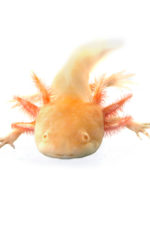Reptile and Amphibian Pet Care Tips
Exotic and sometimes strange, reptiles and amphibians are ideal pets for those who love a challenge. If you find special beauty and intrigue in creatures that some find creepy, follow these expert tips to raise a reptile or amphibian pet.

Be confident
Many reptiles and amphibians are solitary hunters, so they may not have the same instincts to bond with you that cats and dogs do. However, don’t be afraid of them. When handling these pets, be confident! Otherwise, they may sense your stress and be fearful in return. Don’t make sudden, sharp movements or tremble, and don’t take home a pet you wouldn’t gladly handle.
Learn about each species’ unique handling preferences
While some pets, like leopard geckos, enjoy being held, others, like bearded dragons, can be defensive if approached—especially from behind. Boas, meanwhile, may need to be handled with a small hook. When holding a reptile or amphibian, be sure to gently direct its head away from your body.

Be hygienic
Always wash your hands before and after handing reptiles or amphibians, their tanks, their food, and their water. You can make them ill if you aren’t careful—and the reverse is true too. For example, turtles have been known to carry salmonella, so if you decide to adopt one, good hygiene is essential.
Species-specific tips
Finally, be aware that your cold-blooded friend has specialized care needs. No two species are identical, so research care tips for your exact pet. Some examples follow below.
- Rainbow boas need very high humidity levels compared to other reptiles.
- Western hognose snakes can be finicky with food and won’t eat prey that has your scent on it.
- Red-eared slider turtles absolutely need multiple types of lighting in their enclosures, including full-spectrum UV light, a heat lamp, and shade.
To find a reptile and amphibian veterinarian near you, visit arav.org































